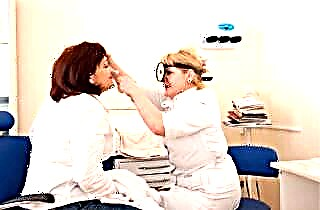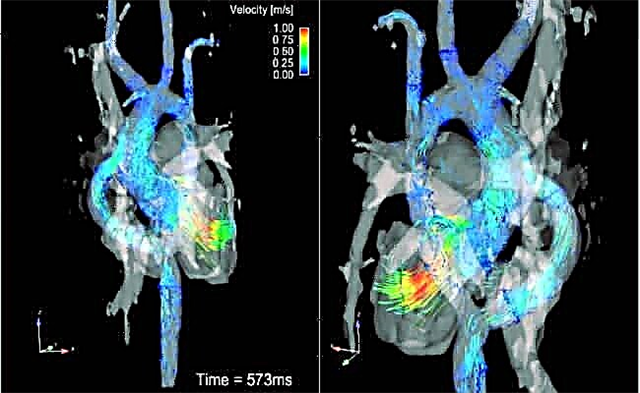Physiological solution is the liquid that is closest to the environments of the human body in terms of its physical characteristics (osmotic pressure). This means that rinsing with it will be the most comfortable and safe. Therefore, the use of such a procedure is indicated for all patients without exception, including rinsing the nose with saline for babies. Even in children of the first years of life, given the physiological immaturity of their mucous membranes, saline will not cause either irritation or drying out of the nasal passages in the future.
Where to get saline solution?
 Saline is often sold in pharmacies. It can be found in rather large containers and in sealed ampoules - the latter option is used for injections. Ampoules with saline solution are somewhat more expensive, but are almost ideal for rinsing babies' nose: the liquid in them is guaranteed to be sterile, has an accurate concentration and a small volume that can be completely used in one rinse procedure.
Saline is often sold in pharmacies. It can be found in rather large containers and in sealed ampoules - the latter option is used for injections. Ampoules with saline solution are somewhat more expensive, but are almost ideal for rinsing babies' nose: the liquid in them is guaranteed to be sterile, has an accurate concentration and a small volume that can be completely used in one rinse procedure.
Now let's talk about how to rinse a baby's nose with homemade saline solution. The process of making this solution at home is based on the exact adherence to the chemical composition. Take 1 liter of water and 9 grams of regular table salt - that's about one level teaspoon. Next, you need to stir the salt thoroughly until it is completely dissolved. This gives you a 0.9% sodium chloride solution in water, which is called saline.
The shelf life of this liquid is 1 day - the next day you will need to prepare a new portion.
The total volume of the resulting liquid will be 1 liter - of course, this is too much for rinsing the nose, especially if an infant needs to rinse the nasal passages. Reducing the number of components when preparing a solution should be proportional: 0.5 l of water per 4 g of salt, etc.
What kind of water to take?
Ideally, you should use distilled water, which can be found in our pharmacies. In some cases, it is sold already in a sealed, completely sterile container and can be used as a solvent for injections. But for nasal rinsing, such a high level of sterility would be overkill, even in babies.
You can also make saline with commercial water sold in supermarkets. Usually its purity is sufficient for this procedure. Of course, it is necessary to choose water without carbon dioxide content and with a minimum of additional components in the form of various mineral additives.
But ordinary tap water is also quite suitable as the basis for preparing a saline solution for rinsing the nose of a young child. Of course, it should be boiled thoroughly beforehand, but the same must be done with any other water, except for the one that is already sealed in a sterile container.
What kind of salt should you use?
A saline solution for washing the nose of a child in the first years of life can be prepared from almost any edible salt. It is advisable to take finely ground salt - it is usually cleaner, it contains fewer random inclusions like sand particles or stone crumbs. In addition, it dissolves faster and more fully in water.
Important! After preparing the solution, strain it thoroughly through cheesecloth. This will allow to remove from it all solid and undissolved particles that, during the rinsing process, can injure the nasal mucosa of the child.
Please note that only regular salt can be used for rinsing the nose of children. Salt with the addition of iodide or potassium iodide (iodized) should not be used, since it can irritate the child's nasal mucosa and inflammation in the nasal passages.
Rinsing technique
Now let's talk about how to rinse the nose with saline for a child up to one year old. To carry out this procedure, you will need:
- container with saline solution;
- pipette;
- possibly a syringe or syringe;
- dry clean gauze;
- dry cotton wool.
The pipette should also be as clean as possible. You don't need to change it every time, but after the procedure it is better to boil it and wrap it in a clean cloth.
Important! Washing can only be done if the child is calm. If he cries and screams, then rinsing the nose is postponed, since in this situation there is a high risk of accidentally damaging the inner surface of the nose.
The whole manipulation can be broken down into several stages:
- Place the child horizontally on their back.
- With one hand, hold his head under the back of his head, and in the other hand take a pipette with saline drawn into it.
- Place 3-5 drops of saline in each nostril for your child. You do not need to pinch one or both sides of the nose.
- Flip him over onto his stomach and position so that his head is lower than the rest of his body. You should not take a long pause after instilling liquid.
- Let the saline drain freely by gravity.
- Turn the baby over and use dry clean gauze to gently wipe off any liquid that remains on his face.

- If necessary, repeat the instillation according to the same procedure again.
- To remove all the liquefied mucus, use a flagella previously twisted from dry cotton wool.
- Gently insert it into the child's nostril and rotate it several times - this will collect the remaining mucus on the flagellum.
- Repeat the procedure for the other nostril.
You can also use a syringe or syringe to extract mucus. In this case, you need to take a disposable syringe, and disinfect the syringe by boiling before and after the procedure. Gently insert the tip of a rubber bulb or syringe (no needle!) Into the baby's nostril. The pear should first be squeezed, and when it enters the nasal cavity, slowly release. This will create negative pressure and the liquefied mucus will be aspirated (sucked in) into the pear. When using a syringe, the same effect is exerted by pulling the plunger towards itself.
Some features and limitations
Despite the fact that saline almost never causes irritation of biological tissues, it is not recommended to abuse this procedure. For infants, rinsing the nose with saline can be performed no more than 2-3 times a day. The duration of such treatment should be no more than 1 week. Then you need to take at least a week break. This is due to the fact that intensive and / or prolonged rinsing of the nasal cavities gradually wash out the microflora, which should normally be there. And periodic breaks allow her to recover to the required level.
Is it possible to rinse a baby's nose with saline solution with the addition of other components? Yes, you can. But the choice of such additives must be approached especially carefully. The simplest option is regular baking soda. You need to add just one pinch of it to a glass of saline. This will somewhat disrupt its physical characteristics, but provide a mild disinfectant effect that helps fight colds.
You need to be very careful about additives with a pronounced odor. So, for example, saline for rinsing the nasal passages cannot be combined with essential oils - they too aggressively affect the mucous membrane during direct contact.But aromatic oils without essential components can be used, but at the same time it is necessary to know for sure that the child does not have an allergic reaction to this particular oil.
It will also be useful to add a little tincture of a medicinal herb, for example, pharmacy chamomile, to the saline solution. This will give the liquid not only a thinning, but also a healing effect, since chamomile has an anti-inflammatory and soothing effect on irritation. And besides, it is a hypoallergenic product that can be used even by the smallest children.




